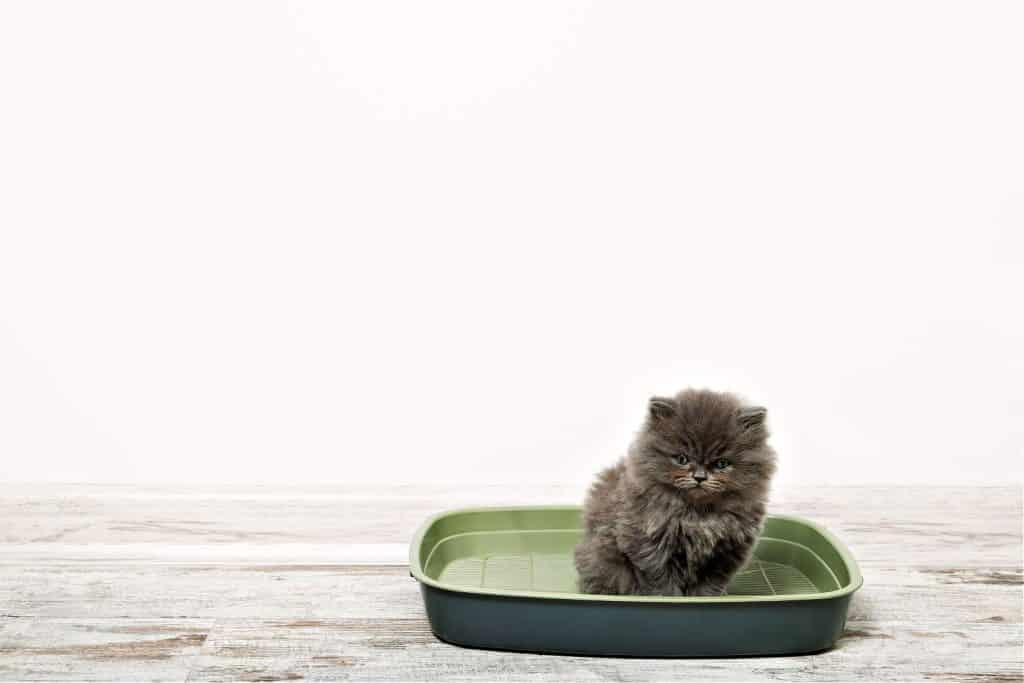Reader's Question:
I'm planning to rearrange my home and was wondering about moving my 10-month-old kitty’s litter box to a different room. Is it possible to do this without causing stress and confusion to my cat or having accidents around the house? What steps should I take to ensure a smooth transition?
Elena S. from San Antonio, Texas
Concerns about stress and messes are valid, but with the right approach, you can transition smoothly without causing your cat undue anxiety or risking your rugs.
Cats are creatures of habit. When you move your cat's litter box, don't do it suddenly. You’ll want to do it gradually so your cat will feel more comfortable and less anxious about the change.
The Right Way to Move a Cat Litter Box
The formula for the number of litter boxes goes: The number of cats + one.
So, even if you only have one cat, you should have two litter boxes. Whenever you're thinking about moving a box, always keep one box still as you move the other one gradually.
This way, your cat has at least one reliable "working" dump station while you're moving the other one. This maintains a constant and familiar option for your cat, reducing potential stress.
Then, think about where to put the new litter box. Take some time to decide on the new spot. Ask yourself:
- Is it easy for my cat to get to?
- Is it away from loud noises that might scare my kitty?
- Does this spot meet my cat's need for privacy?
For a thorough understanding of the many aspects of choosing the best spot for your cat's litter box, consider exploring our detailed guide that covers this topic.
How to Properly Move the Litter Box
Cats can be quite the detectives in their own territory, so when you're moving their litter box, you'll need to do so in careful stages.
Playing a "now you see it, now you don't" game with your cat's litter box is not a good idea. If they can't find their box where they expect it, they might just choose an inconvenient spot to do their business.
Take Your Time
Gradually start moving the original litter box towards the new location. This isn't a one-day affair; take it slow, moving the box a little bit daily.
Each time you move the litter box on the way to its new place, gently show your cat where it is.
Keep Everything the Same
As you move the box, keep everything else the same. The same litter, the same cleaning routine—these familiar details will give your cat confidence during the change.
Be Patient
Please know that despite the preparations, with some cats, no matter how much you try to make the move the right way, there may be problems.
Prepare yourself for accidents your cat may make, and remember to stay patient.
Your cat will learn faster and respond better to kindness rather than frustration. Don’t scold your cat for making a mistake.
Making Sure Your Cat Is Happy with the Move
Keep an eye on your cat's behavior after moving their litter box. If your cat starts going to the bathroom outside it, it can be a sign they’re not happy with the change.
Cats often let us know how they feel by where they choose to pee or poop. If they're going outside their box, they might be trying to tell you that something isn't right.
If your cat normally buries their waste but has stopped, this could also be a sign that they're not comfortable with the new litter box or its location.
You might need to clean the litter box more often, switch up the type of litter you're using, or even move the litter box to another spot that your cat prefers.
If these issues persist, you might have to reset the situation by putting the litter box back where it was and then trying to move again, but more slowly this time.

Read more: How Many Litter Boxes per Cat Should You Have






I use clay litter for my cat but now I changed it to pine and I changed his litter box too. does he still smell that it is his new litter box litter. I leave his old litter box in the basement but I put the new one upstairs. I want to change the place of his litter box.